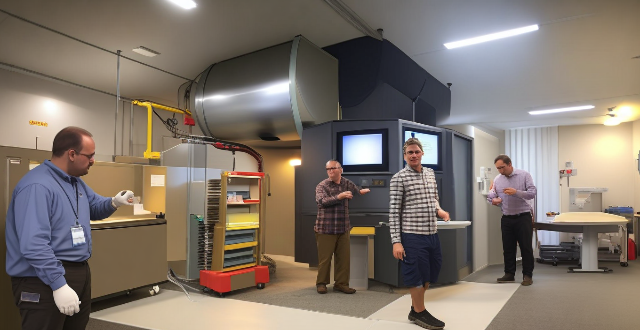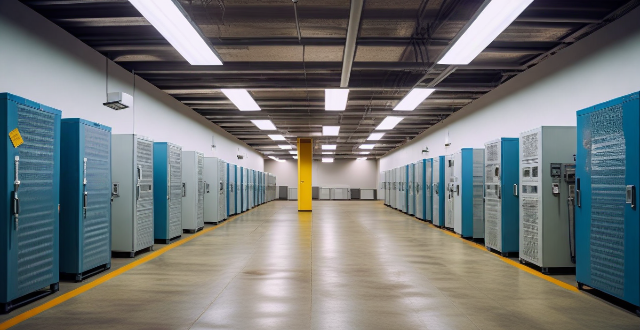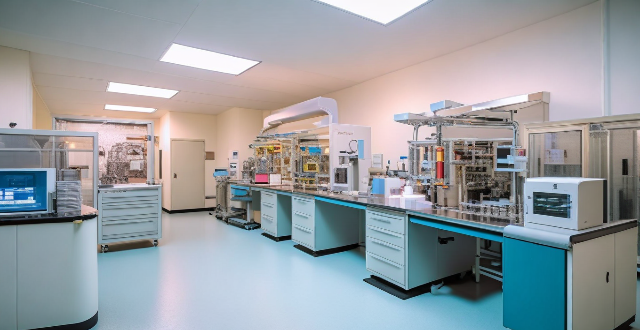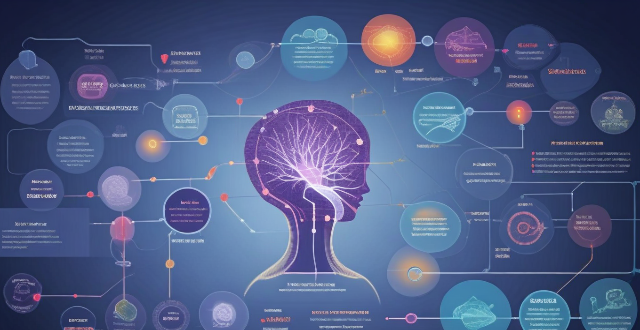Biosafety Including

How can we ensure biosafety in laboratories and research facilities ?
Ensuring Biosafety in Laboratories and Research Facilities: Biosafety is a critical aspect of any laboratory or research facility that deals with potentially hazardous biological materials. It involves implementing measures to prevent the exposure of personnel, the public, and the environment to these materials. Here are some ways to ensure biosafety in laboratories and research facilities: 1\. Establish clear policies and procedures, including creating a biosafety manual, providing training and education, and developing an emergency response plan. 2\. Maintain appropriate laboratory design and equipment, such as using physical barriers, ventilation systems, and decontamination areas. 3\. Practice good laboratory techniques, including using personal protective equipment (PPE), aseptic techniques, and proper waste management. 4\. Conduct risk assessments and implement controls, such as identifying potential hazards, evaluating the likelihood and severity of each identified hazard, and implementing appropriate administrative, engineering, and work practice controls. 5\. Monitor and review biosafety practices regularly, including conducting regular audits, encouraging feedback mechanisms, and continuously improving policies and procedures based on new information, technologies, or changes in the work environment.

What are the potential consequences of not having adequate biosafety policies in place ?
Biosafety policies are crucial for handling and containing biological materials safely. Inadequate biosafety measures can lead to direct and indirect exposure to pathogens, spread of disease, environmental contamination, legal and ethical issues, and economic impacts. It is vital for institutions and researchers to prioritize biosafety measures to protect human health, the environment, and society.

What are the key principles of biosafety management ?
Biosafety management is a set of practices and procedures designed to minimize the potential risks associated with handling biological materials in research, clinical, and industrial settings. The key principles of biosafety management include risk assessment, facility design and engineering controls, personal protective equipment (PPE), standard microbiological practices (SMP), training and education, and incident response plans. Risk assessment involves identifying and evaluating potential hazards associated with working with biological materials, including assessing the risk of exposure to pathogens, toxins, and other harmful substances. Proper facility design and engineering controls are essential for effective biosafety management, including designing laboratory spaces that minimize the risk of exposure to hazardous materials and implementing appropriate ventilation systems. Wearing appropriate personal protective equipment (PPE) is crucial for protecting workers from exposure to hazardous materials. Standard microbiological practices (SMP) are essential for maintaining a safe working environment when handling biological materials. Training and education are critical components of biosafety management, and all personnel who work with biological materials must receive appropriate training on biosafety practices. Having an incident response plan in place is essential for managing accidents or spills involving hazardous materials.

How do biosafety policies differ across countries and regions ?
Biosafety policies are crucial for protecting public health and the environment from potential risks associated with biotechnology. These policies vary significantly across countries and regions due to differences in regulatory frameworks, cultural values, economic resources, and technological advancements. The United States has a well-established regulatory framework for biosafety, while the European Union has a strict regulatory framework. In Asia, China and India have relatively new biosafety laws. Cultural values also play a significant role in shaping biosafety policies across countries and regions. Economic resources can impact the implementation and enforcement of biosafety policies, and technological advancements can introduce new challenges and opportunities.

How do biosafety policies evolve in response to emerging infectious diseases and pandemics ?
Biosafety policies are evolving in response to emerging infectious diseases and pandemics. The evolution is driven by scientific advancements, global health initiatives, and lessons from past outbreaks. Key factors driving this evolution include: - Scientific advancements such as research and development and genomic sequencing. - Global health initiatives like international collaboration and surveillance systems. - Lessons learned from past outbreaks, leading to review and revision of policies and the adoption of best practices. Examples of evolved biosafety policies include: - Laboratory biosafety with clear classification systems (BSL) and standard operating procedures (SOPs). - Public health measures such as infection prevention and control (IPC) and vaccination programs. - Travel restrictions and quarantine measures like entry screening and quarantine regulations. - International regulations and agreements, including the Biological Weapons Convention (BWC) and the Global Health Security Agenda (GHSA). The continuous evolution of biosafety policies is crucial for managing risks associated with biological agents and protecting public health.

What role does public health play in the implementation of biosafety policies ?
Public health is crucial for implementing biosafety policies, which aim to contain and manage biological agents that may pose a risk to human health, animal health, or the environment. Public health professionals play key roles in surveillance and disease detection, risk assessment and management, laboratory biosafety, vaccination programs, public education and awareness, policy development and implementation, emergency response, and international collaboration. By monitoring disease trends, assessing risks, maintaining laboratory safety, promoting vaccination, educating the public, developing policies, responding to emergencies, and collaborating internationally, public health professionals help protect individuals and communities from biological hazards.

How do biosafety policies impact the research and development of new drugs and vaccines ?
Biosafety policies play a crucial role in drug and vaccine development by promoting safety, protecting public health, preserving the environment, and fostering scientific progress. These policies provide guidelines for handling hazardous materials, maintaining a clean laboratory environment, and preventing accidental exposure or contamination. By adhering to these standards, researchers can work more safely and effectively, reducing the risk of accidents or injuries that could slow down or halt their work. Additionally, biosafety policies help protect public health during clinical trials, minimize the risk of adverse reactions or side effects, and ensure that any new drugs or vaccines are safe before they reach the market. Biosafety policies also govern the disposal of hazardous waste materials and prevent accidental spills or releases of dangerous substances, protecting the environment from long-lasting harm. Finally, these policies promote collaboration and information sharing among researchers, leading to faster and more efficient drug and vaccine development while ensuring that research findings are reliable and reproducible.

Can you provide examples of successful biosafety policies and their impact on public health ?
Biosafety policies are crucial for protecting public health by preventing the release of hazardous biological agents into the environment. Successful biosafety policies include Institutional Biosafety Committees (IBCs), biosecurity measures in laboratories, and vaccine safety monitoring. These policies help reduce risks associated with hazardous materials, prevent bioterrorism, maintain public trust, and enhance vaccine safety. Overall, successful biosafety policies play a vital role in protecting public health.

What are the different levels of biosafety containment and when should they be used ?
Biosafety containment levels are measures taken to isolate hazardous biological agents in labs and research facilities. These range from 1 (low risk) to 4 (high risk), with each level indicating the severity of the risk associated with the agent and the corresponding safety measures required to handle it. Examples include most microorganisms used in teaching labs (BSL-1), human pathogens like Salmonella (BSL-2), Mycobacterium tuberculosis (BSL-3), and Ebola virus (BSL-4). The appropriate biosafety containment level should be determined based on a risk assessment of the biological agent being handled, taking into account factors such as pathogenicity, mode of transmission, availability of effective treatments or vaccines, and potential impact on public health.

How can biosafety be improved in healthcare facilities ?
Improving biosafety in healthcare facilities involves implementing clear policies, using advanced technology, and creating a culture of safety. Specific strategies include developing SOPs, regular training, designated biohazard areas, infection control measures, surveillance, waste management, emergency response planning, encouraging reporting, leadership support, and staying updated with scientific advancements.

What are the key components of an effective biosafety policy ?
An effective biosafety policy is crucial for any organization that handles biological materials. It ensures the safety of personnel, the environment, and the public by minimizing risks associated with biological agents. Key components of an effective biosafety policy include: introduction, responsibilities, hazard identification and risk assessment, biosafety levels, engineering controls, administrative controls, personal protective equipment (PPE), waste management, incident response plan, and review and updates. Incorporating these key components into your biosafety policy can create a comprehensive framework that ensures the safe handling of biological materials and protects the health and safety of your employees and the environment.

Can you explain the difference between biosafety levels 1-4 ?
Biosafety Levels (BSL) are guidelines for handling hazardous biological agents, with four levels of increasing risk and safety measures. BSL-1 is for non-pathogenic organisms, BSL-2 for moderate risk agents, BSL-3 for serious disease-causing agents, and BSL-4 for highly dangerous agents like Ebola. Differences include lab design, access control, safety equipment, and procedures to protect personnel and the environment.

How can biosafety be maintained during transportation of biological materials ?
Transporting biological materials requires adherence to biosafety protocols, including compliance with regulations, proper packaging, temperature control, security measures, training of personnel, incident response planning, and waste management. Following these guidelines ensures the safety of all parties involved and prevents contamination or harm to individuals and the environment.

How do biosafety policies address the risk of accidental or intentional release of harmful biological agents ?
Biosafety policies are comprehensive measures designed to manage the risks associated with accidental or intentional releases of harmful biological agents. These include: 1. **Biosafety Levels**: Four tiers of guidelines for handling different risk groups of microorganisms, each with specific facility, equipment, and training requirements. 2. **Laboratory Procedures**: Strict adherence to safety procedures using engineering controls, personal protective equipment, standard microbiological practices, and waste management protocols. 3. **Regulations and Compliance**: Government laws and regulations ensuring safe handling through transportation guidelines, facility registration, reporting requirements, and oversight by agencies like the CDC. 4. **Training and Education**: Regular sessions on biosafety practices, emergency response, and continuous learning to keep personnel updated. 5. **Incident Response Plans**: Preparedness for incidents through emergency response teams, decontamination procedures, medical treatment, and communication strategies. By addressing these aspects diligently, biosafety policies aim to minimize the risk of accidental or intentional release of harmful biological agents.

What role do personal protective equipment (PPE) play in maintaining biosafety ?
PPE is vital for maintaining biosafety by preventing exposure to harmful biological agents, reducing contamination, complying with regulations, and promoting safety awareness. Types of PPE include physical barriers like gloves and gowns, eye and face protection, respiratory protection, and head protection. Best practices involve ensuring proper fit, following correct donning and doffing procedures, replacing damaged or contaminated PPE, storing it properly, and regularly inspecting it for wear or damage.

What are the potential risks associated with biosafety breaches ?
Biosafety breaches pose significant risks to human health, the environment, and biodiversity. These risks include infection through direct exposure or aerosol transmission, toxicity from microorganism-produced toxins, allergies, ecosystem disruption, biodiversity loss, genetic exchange, agricultural impacts, trade and travel restrictions, public fear, liability and compensation issues, and ethical concerns regarding genetically modified organisms. Facilities handling hazardous biological materials must implement strict safety measures to prevent these incidents.

What measures should be taken to ensure compliance with biosafety policies in laboratories and research facilities ?
Ensuring biosafety compliance in laboratories and research facilities is crucial for the protection of personnel, the environment, and research subjects. Measures such as regular training sessions, competency assessments, clear policies and procedures, proper use of personal protective equipment (PPE), effective waste management, and well-developed emergency response plans should be implemented to create a safe working environment.

What measures should be taken to prevent the spread of infectious diseases in a laboratory setting ?
In a laboratory setting, it is crucial to take measures to prevent the spread of infectious diseases. This includes wearing personal protective equipment (PPE), practicing proper hand hygiene, using biosafety cabinets for handling pathogens, and properly disposing of biohazardous waste. Regular cleaning and disinfection of surfaces and equipment is also essential, as well as following specific protocols for procedures like centrifugation and pipetting. By implementing these measures, the risk of infection can be significantly reduced.

Can you suggest some festive recipes for Christmas dinner ?
The text provides various festive recipes for Christmas dinner, including main courses such as roasted turkey and honey-glazed ham, side dishes like garlic mashed potatoes and green bean casserole, and desserts including pumpkin pie and gingerbread cake. Each recipe is accompanied by a list of ingredients and step-by-step instructions for preparation.

What is the importance of including climate change in school curriculums ?
Including climate change in school curriculums is crucial for raising awareness, promoting action and advocacy, and preparing students for a sustainable future. By educating students about the causes and effects of climate change, as well as potential solutions, they gain knowledge, critical thinking skills, and a global perspective. This can motivate them to take action, become advocates for climate action, and pursue careers related to climate change. Including climate change in the curriculum also has the potential to create a generational shift in attitudes towards the environment, foster innovation and creativity in finding solutions, and develop future leaders who prioritize environmental issues.

What are the potential health risks associated with global warming ?
Global warming, caused by human activities, poses various health risks including heat-related illnesses like heatstroke and dehydration, spread of diseases such as malaria and Lyme disease, respiratory problems including asthma and allergies, and mental health issues like anxiety, depression, and PTSD. It is crucial to take measures to mitigate these effects and safeguard public health.

What are the recommended disinfection procedures for healthcare facilities to ensure patient safety ?
Healthcare facilities must implement strict disinfection procedures to ensure patient safety and prevent disease spread. These include using PPE, practicing hand hygiene, cleaning and disinfecting surfaces, sterilizing critical instruments, and managing waste properly. Specific areas of concern are patient rooms, operating rooms, labs, waiting areas, and public spaces. Regular training, surveillance, and environmental monitoring are essential for maintaining effective disinfection practices.

What are the potential consequences of ignoring climate change ?
The text discusses the potential consequences of ignoring climate change, including environmental effects such as extreme weather events and loss of biodiversity, economic disruptions like damage to agriculture and infrastructure, public health issues including the spread of diseases and heat-related illnesses, and social impacts such as forced migration and reduced quality of life. It emphasizes the importance of addressing climate change to avoid these catastrophic implications for our planet and all life on it.

Where will the next Summer Olympics football tournament be held ?
The next Summer Olympics football tournament will take place in Tokyo, Japan from July 23 to August 8, 2021. The matches will be played at several stadiums across Japan, including Saitama Stadium, Sapporo Dome, International Stadium Yokohama, Nippon Gaishi Stadium, and Kashima Soccer Stadium. There will be 16 men's national teams and 12 women's national teams competing for gold medals in their respective categories. Due to the COVID-19 pandemic, there have been some changes to the schedule and format of the tournament, including limited spectators, staggered scheduling, and regular testing for all participants.

Why is French cuisine, including desserts, considered among the finest in the world ?
French cuisine, including desserts, is renowned worldwide for its exquisite flavors, meticulous preparation, and artistic presentation. This reputation is due to factors such as historical significance, quality ingredients, artisanal methods, chef training, innovation, and attention to detail. French cuisine has a long history dating back to medieval times when it was influenced by various cultural invasions and trades. Over centuries, French chefs refined their techniques, creating a rich culinary tradition that emphasizes depth of flavor and precision in cooking methods. French cuisine places a high value on using fresh, high-quality ingredients, often sourced locally. The variety of ingredients available in different regions of France allows for a wide array of dishes and flavors. French baking traditions, such as those used in making croissants and baguettes, involve complex processes that yield exceptional results. Many French desserts, like macarons and éclairs, are handcrafted with care, ensuring each piece is of the highest quality. France is home to some of the best culinary schools in the world, where future chefs receive rigorous training. Young chefs often learn from experienced masters through apprenticeships, preserving techniques and recipes. French chefs are known for their innovative approaches to traditional dishes, pushing the boundaries of gastronomy. The integration of international flavors into classic French dishes keeps the cuisine dynamic and exciting. French cuisine emphasizes not just taste but also the visual appeal of the dish, making every meal an experience. The emphasis on all senses—smell, sight, taste, touch, and even sound—creates a comprehensive dining experience.

What are the benefits of including more fruits and vegetables in your diet ?
Including more fruits and vegetables in the diet can lead to improved nutritional value, better weight management, reduced risk of chronic diseases, a boosted immune system, and enhanced mental health. These foods are rich in vitamins, minerals, fiber, and antioxidants, which support overall health and well-being.

What are the health benefits of including more Chinese food in my diet ?
Incorporating Chinese food into your diet can offer a range of health benefits, including balanced nutrition, lower unhealthy fats, antioxidants and phytonutrients, heart health, weight management, digestive health, reduced risk of chronic diseases, variety and flavor. It's important to consume deep-fried items and dishes with high sugar content in moderation to fully reap the health rewards of Chinese cuisine.

How do climate disasters affect human populations ?
Climate disasters, such as hurricanes and floods, have significant impacts on human populations, including loss of life, injuries, damage to property, displacement, and food insecurity. Indirect effects include economic disruption, mental health issues, environmental degradation, social disruption, migration crises, and political instability. Mitigating these effects requires preparedness, response, and recovery efforts, including early warning systems, emergency plans, resilient infrastructure, community education, and climate change mitigation.

How have businesses adapted to pandemic management measures ?
Businesses worldwide have undergone significant transformations in response to the COVID-19 pandemic, including increased adoption of remote work, changes in operations like local sourcing and automation, health and safety measures such as physical distancing and PPE, financial strategies including cost cutting and government aid, enhanced communication and marketing efforts through virtual events and content marketing, and rapid digital transformation with cloud services and data analytics. These adaptations aim to ensure business survival and operation during these challenging times while also presenting opportunities for future growth and efficiency.